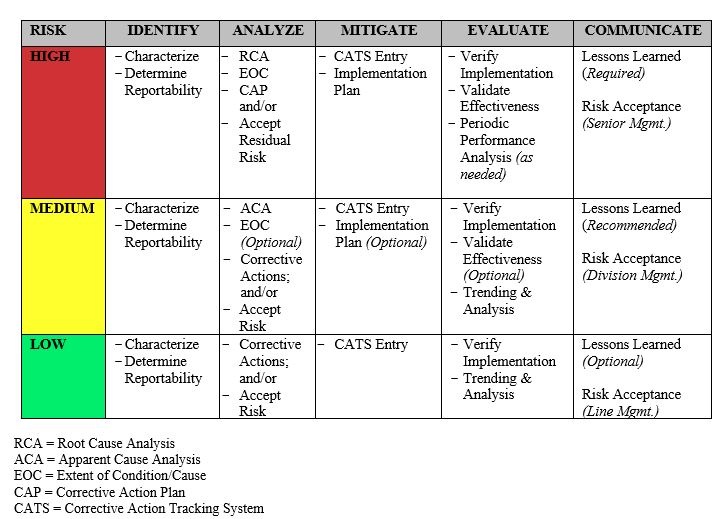The Lawrence Berkeley National Laboratory Issues Management Program (IMP) supports the Laboratory’s Issues Management Policy 04.02.003.000 and encompasses identifying, analyzing, mitigating and evaluating issues through issue resolution. Ongoing communication of issues, and sharing of lessons learned and best practices across the Laboratory are vital components of effective issues management. Transparency, collaboration, a learning organization and continuous improvement are the pillars of the Issues Management Program.
Quick Link: Standards and Templates
The issues that are managed following the IMP pertain to any safety or operational event, condition, or circumstance that:
- results or could result in injury, illness, damage, loss, or noncompliance (examples: an actual or near miss incident);
- represents a program, safety or operational deficiency (examples: an audit or assessment finding, a performance weakness as identified through walkthroughs, inspections, metrics or performance analyses); and/or
- adversely affects the achievement of mission, strategic and business objectives (examples: environmental, financial, operational, compliance and reputational risks).
The IMP requirements and processes are risk-based and include the following:
Risks Acceptance Decisions
For high risk issues, residual risks may be accepted and for medium and low risk issues, unmitigated risks may be accepted when:
- Cost of mitigation outweighs benefit
Cost prohibited, administratively burdensome, or leads to degradation in other areas.
- Residual risks are managed to the lowest level of exposure
Further corrective action would not be an effective use of resources because the unmitigated risk exposure would not substantially impede safety and/or operational performance.
- Compensating actions are in place to minimize risks
Corrective action is implemented to alter the exposure, but does not eliminate the risk.
Senior, division and line management only make risk acceptance decisions as stated above. Risk acceptance decisions and rationale are documented and approved in the CATS Database.
Below is a work flow of the issues management process. The Program Manuals and tools to support the Issues Management Program and processes implementation may be accessed by clicking on the menu links to the left.


